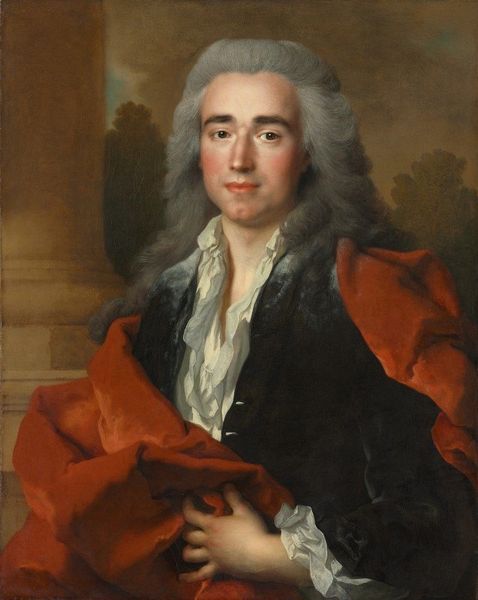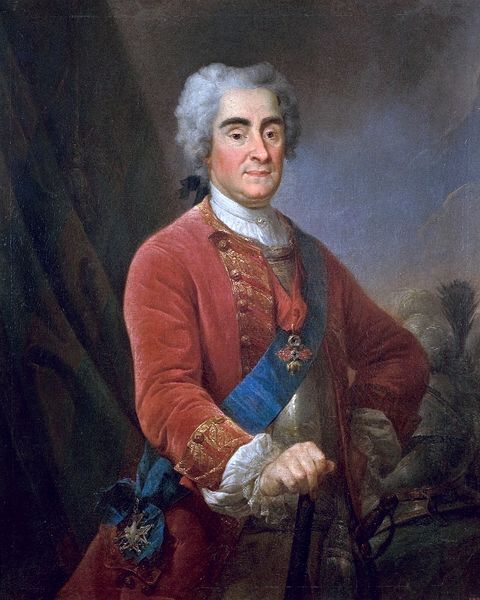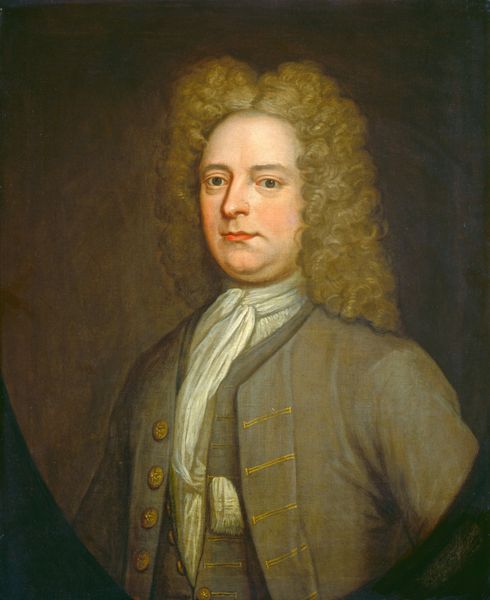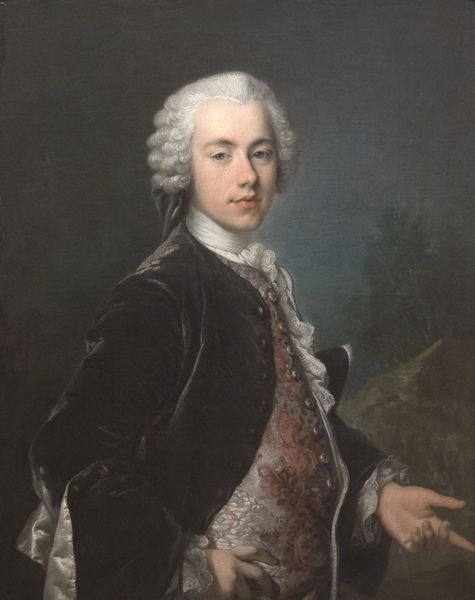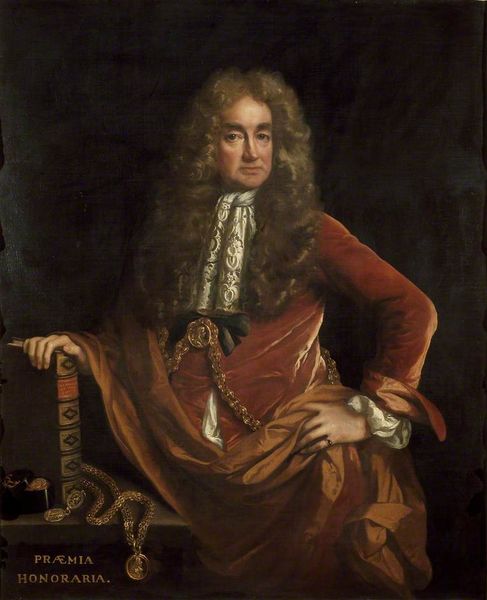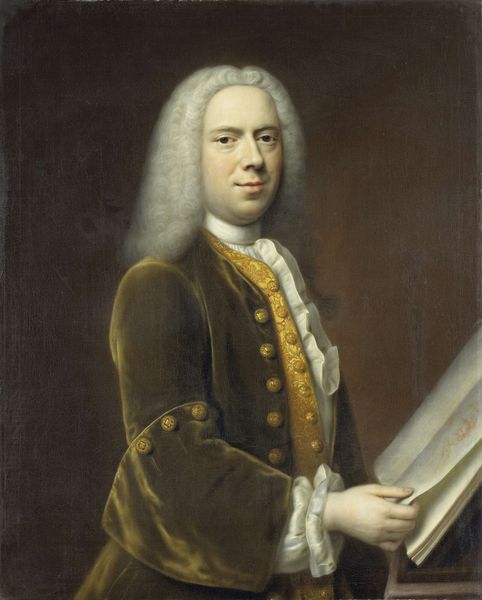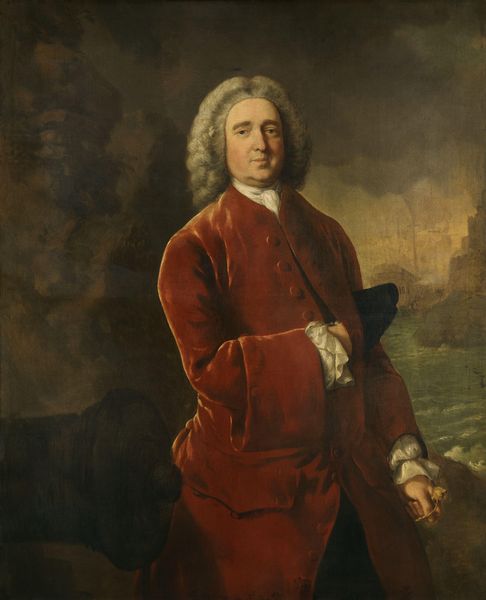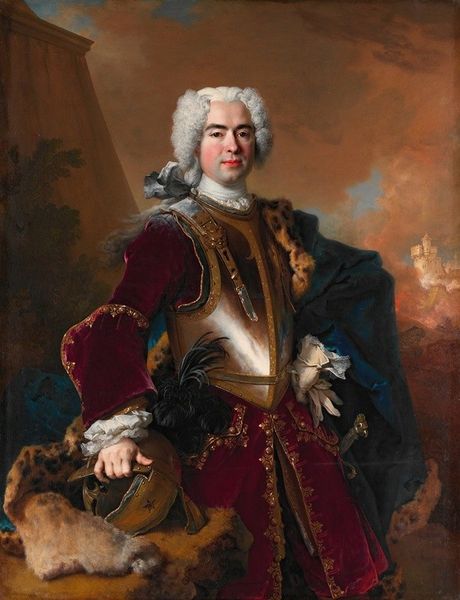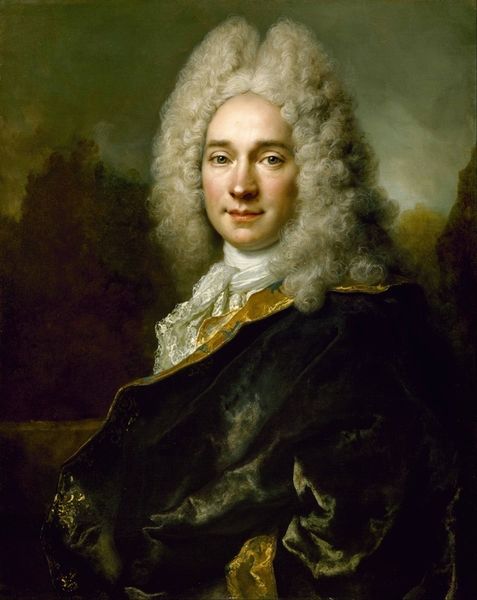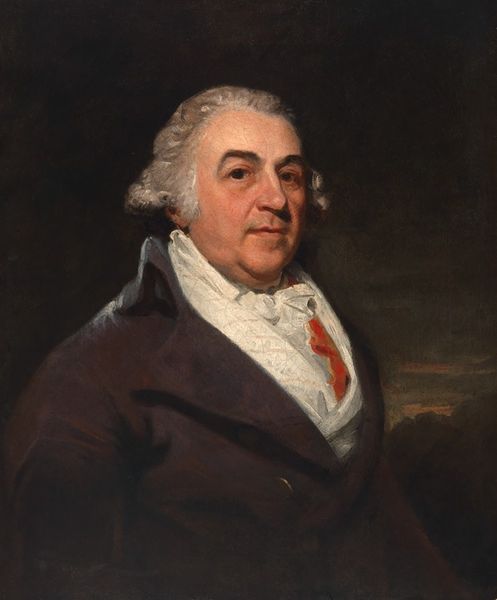
painting, oil-paint
#
portrait
#
figurative
#
baroque
#
portrait
#
painting
#
oil-paint
#
portrait reference
#
portrait head and shoulder
#
intimism
#
classicism
#
animal portrait
#
animal drawing portrait
#
portrait drawing
#
genre-painting
#
history-painting
#
facial portrait
#
academic-art
#
portrait art
#
fine art portrait
#
digital portrait
Copyright: Public Domain: Artvee
Curator: Oh, look at this portrait! It immediately strikes me as warm and inviting. Is this another one of those French aristocratic paintings? Editor: Yes, you've hit it on the head. This is Jean-Marc Nattier’s "Mister Sarasin," painted in 1734 with oil on canvas. Nattier was THE portraitist of the French court during the reign of Louis XV. What interests me is this particular figure’s relationship to the prevailing social hierarchies. Curator: He has kind eyes. Maybe not the cutthroat courtier you'd expect. The portrait isn't overly staged; the sitter even seems approachable. I find something rather vulnerable in the gaze. It is really drawing me in. It's refreshing to see that human spark beyond the wig and fine clothes. Editor: Approachability in Baroque portraiture is not accidental; these portraits reinforced and legitimized systems of power. Consider the costuming: While seemingly "simple," it denotes wealth and status. Nattier expertly painted fabrics – see the richness of that crimson robe? Clothing can signal a myriad of things: class, allegiance, rebellion. It is carefully managed. Curator: Right, I was seduced by the velvet curtains and forgot about the whole performance thing. Yet I wonder what he felt being displayed, judged for his status, his face forever captured for the gaze of the wealthy. There's a strange sadness beneath it all, this fleeting sense that, despite his stature, his existence is subject to others' whim. Editor: That tension is important to note: portraiture is power, yet the sitter is at the whim of both patron and artist. Gender is also significant: women often are depicted in these portraits passively, reflecting the cultural emphasis on female submission. Men tend to hold symbols of authority, reflecting active engagement in governance. So much to unpack. Curator: Always. It feels, on second viewing, a little ghostly too, almost melancholic. Editor: Which perhaps speaks to our shared awareness that we now only understand Mister Sarasin through this representation – carefully crafted and undeniably captivating – a relic from an irretrievable era of absolute power and social artifice. Thank you for pointing toward this beautiful sadness. Curator: And thank you for reminding me not to be entirely seduced. Every gaze tells a story. Even the painter's!
Comments
No comments
Be the first to comment and join the conversation on the ultimate creative platform.
